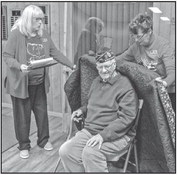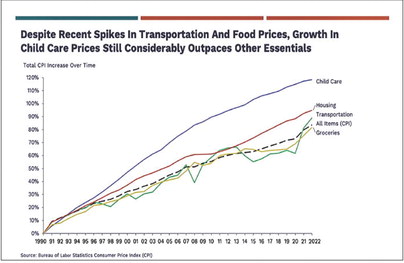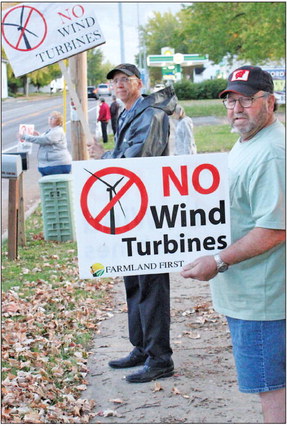County debates buying property


By Kevin O’Brien
Before approving updates to Marathon County’s strategic plan last week, supervisors debated whether it should be the county’s goal to continue adding land to its parks and forests. Supervisor Tim Sondelski, Mosinee, offered an amendment to remove a strategic goal of acquiring land for “public park and forest use to retain natural landscapes and resources.” More specifically, he wanted to nix an outcome measure of adding an average of 320 acres per year to the county’s parks and forestry system.
Sondelski noted that the county already has over 30,000 acres of forestland and 3,400 acres across 18 parks. He also pointed out that the town of Bergen, where he lives, takes a “real hit in our tax revenue” because of the state’s Mead Wildlife Area, and he doesn’t want to see more private land taken off the tax rolls.
“It hurts not only the townships, as far as revenue, it also hurts the county too, but more so the small townships,” he said.
Supervisor Jacob Langenhahn, Marathon, defended the goal of trying to acquire an average of 320 acres per year. He said the number is included in the county’s comprehensive outdoor recreation plan and its comprehensive forest land use plan, which were approved by the board based on public comments supporting the continued purchase of land for parks and forests.
The number 320 is not arbitrary, he said, noting that it is part of an overall “blocking” concept that promises to offer recreational opportunities “within a reasonable distance” for everyone in the county. The goal is to have 250 acres of parks and forest for every 1,000 residents, he said.
Jamie Polley, director of Parks, Recreation and Forestry, said even if the county were to acquire 320 acres per year – which it has only done once in 20 years – it would still be 4,000 acres below its goal for 2030. In order to achieve the ratio of 250 acres per 1,000 residents, the county would need to acquire over 500 acres per year for the rest of the decade, she noted.
For parkland only, the goal is to have 26 acres per 1,000 residents, she said, but “we are lacking in some areas in the western county.”
Polley emphasized that her department does not seek out land to purchase; it only acts if a landowner comes forward with land to sell. Even then, she said it requires approval by the county board and the local unit of government.
“If the townships say ‘No, we don’t want you to purchase land in our township,’ it doesn’t even get to the board because we stop it there,” she said. “We don’t go against that.”
Supervisor Thomas Seubert, Stratford, questioned if the county could really be considered short on forest and park land when you add in the Mead Wildlife Area, McMillan Marsh Wildlife Area and other state parks.
“The Mead Wildlife Area is 20,000 acres. It runs for almost 18 miles,” he said.
Polley said she would have to verify if state-owned green spaces are included in the county’s goal of 250 acres of park/forest per 1,000 residents. She also noted that 27 percent of the county’s land is forested, but out of that, 20 percent is privately owned and 7 percent is county-owned.
Langenhahn noted that a lot of landowners who sell their land to the county already have it classified as “managed forest land.”
“That land already has a reduced property tax rate, which impacts the tax revenue of that particular town,” he said.
As compensation, towns with county forest acres get a 10 percent cut of the gross timber sales within their borders, he said, and the state legislature recently increased the payment in lieu of taxes from 30 to 63 cents per acre of forest. Supervisor Jason Wilhelm, Athens, said most of the forested land in his area is privately owned but open to the public. He wondered if the county was driving up the price of scarce forest land by bidding on “huge swaths” of it. Polley said the county will not buy the land for anything more than the appraised value. “We don’t do any competitive bidding against any other buyers of land,” she said. “If they won’t sell it to us at the appraised value, then we will walk away.” Supervisor Stacey Morasche, Wausau, said she supports the idea of buying land if it’s next to existing county-owned parcels, but she does not support setting a 320-acre goal.
“I don’t believe this outcome measure is necessary,” she said. “We can still go ahead and purchase land.”
Supervisor Tony Sherfinski, Schofield, said he’s fine with the county following up on offers from landowners, but he thinks the 320-acre goal promotes the perpetual growth of government.
“It’s this idea that the parks department, the county forests should constantly increase, and there should be a bias towards constantly increasing the amount of county-owned land,” he said.
Supervisor John Robinson, Wausau, supported the addition of parks and forests as a way to attract more residents to the county, and to provide economic opportunities for logging companies, who share their proceeds with the county and towns.
Ultimately, the board narrowly defeated Sondelski’s amendments, but it unanimously adopted an amendment by Langenhahn, which makes it clear that the county “may” acquire an average of 320 acres of park and forest land per year, rather than “will.”
“That way it doesn’t give the impression of a mandate to our staff to go out and get this land,” Langenhahn said.

Jason Wilhelm




